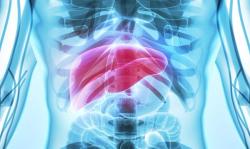
OR WAIT null SECS
SEQUOIA-HCM Substudy Details Effects of Aficamten on Cardiac Structure and Remodeling
Ahmad Masri, MD, MS, discusses the results of a SEQUOIA-HCM substudy leveraging cardiac magnetic resonance to assess structural changes associated with aficamten use in HCM.
Leading up to an expected US Food and Drug Administration submission, which Cytokinetics expressed will be filed before the close of Q3 2024, new data at the European Society of Cardiology (ESC) Congress 2024 details the effects of aficamten from the cardiac magnetic resonance (CMR) substudy in SEQUOIA-HCM.1,2
Presented at Heart Failure 2024 and simultaneously published in the New England Journal of Medicine, the 24-week phase 3 SEQUOIA-HCM trial enrolled 282 patients with obstructive hypertrophic cardiomyopathy (HCM), with 142 randomized to aficamten and 140 randomized to placebo.3
This cohort had a mean age of 59.1 years, 59.2% were men, a baseline mean resting left ventricular outflow tract (LVOT) gradient was 55.1 mmHg, and a baseline mean left ventricular ejection fraction (LVEF) was 74.8%. Assessments of baseline medication use revealed 61.3% of the patients were receiving beta-blockers and 12.8% were receiving disopyramide at screening.3
Results of the overall trial demonstrated use of aficamten was associated with significantly greater improvement in peak oxygen uptake and for all 10 secondary end points included in the trial relative to placebo therapy. For the primary outcome, results indicated the mean change in the peak oxygen uptake was 1.8 ml per kilogram per minute (95% confidence interval [CI], 1.2 to 2.3) in the aficamten group and 0.0 ml per kilogram per minute (95% CI, −0.5 to 0.5) in the placebo group (least-squares mean between-group difference, 1.7 ml per kilogram per minute; 95% CI, 1.0 to 2.4; P <.001).3
At ESC Congress 2024, Ahmad Masri, MD, MS, director of the Hypertrophic Cardiomyopathy Center at Oregon Health & Science University, presented data from the CMR sub-study in the trial, which included 50 patients who completed the study. Of these, 21 received aficamten and 29 received placebo. Investigators noted these cohorts had comparable baseline characteristics as the overall patient population. The primary outcome of interest for the substudy was change from baseline to week 24 in left ventricular mass index (LVMI).2
Results demonstrated treatment with aficamten was associated with significantly improved LVMI (-15.4 g/m2, p=0.001) and favorable cardiac remodeling, which was measured as reductions in left ventricular maximal wall thickness (P <.001), left atrial volume index (P <.001), and extracellular volume mass index (P = .014). Investigators noted results demonstrating replacement fibrosis, as measured via late gadolinium enhancement, remained stable.2
For more on this study and its findings, check out our interview from Masri from the conference floor at ESC Congress 2024.
Relevant disclosures for Masri include Cytokinetics, Bristol Myers Squibb, Eidos, Pfizer, Ionis, Lexicon, AstraZeneca, Tenaya, and others.
References:
- Cytokinetics, Inc. Cytokinetics announces initiation of phase 1 study of Aficamten in healthy Japanese participants. Cytokinetics, Inc. June 17, 2024. Accessed September 3, 2024. https://ir.cytokinetics.com/news-releases/news-release-details/cytokinetics-announces-initiation-phase-1-study-aficamten.
- Masri A, Cardoso RN, Abraham TP, et al. Effect of Aficamten on Cardiac Structure and Function in Obstructive Hypertrophic Cardiomyopathy: SEQUOIA-HCM CMR Substudy. J Am Coll Cardiol. Published online August 28, 2024. doi:10.1016/j.jacc.2024.08.015
- Campbell P. Aficamten showcases OHCM benefit in phase 3 Sequoia-HCM trial. HCP Live. May 13, 2024. Accessed September 4, 2024. https://www.hcplive.com/view/aficamten-showcases-ohcm-benefit-in-phase-3-sequoia-hcm-trial.


